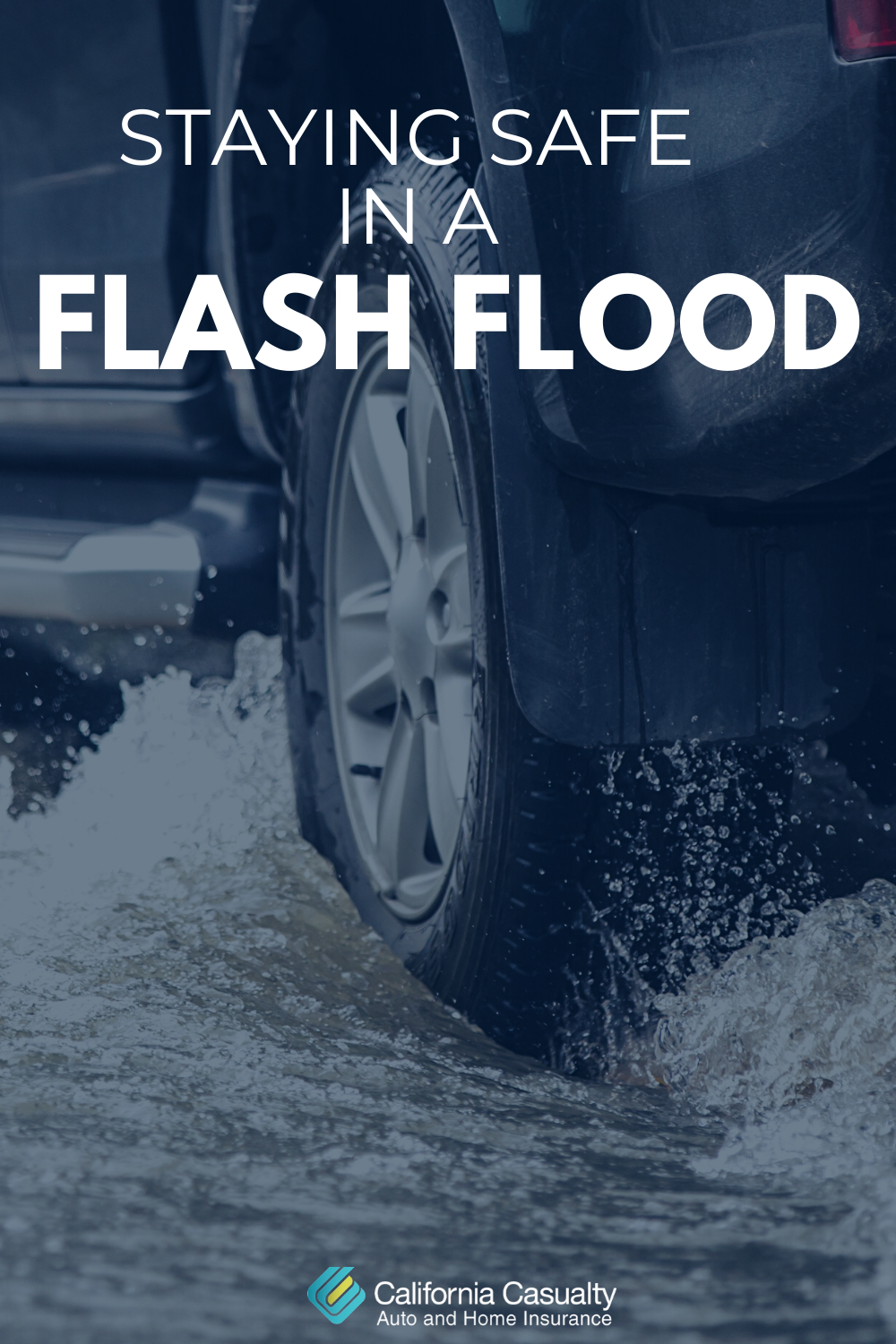Flash Floods: What They Are, How To Stay Safe, And Understanding Flood Warnings

Table of Contents
What are Flash Floods?
Flash floods are characterized by a rapid and unexpected rise in water levels in normally dry areas. Unlike other types of floods, which may develop over days or weeks, flash floods have a rapid onset, often occurring within minutes or hours of intense rainfall or other triggering events. This rapid inundation makes them particularly dangerous, leaving little time for evacuation or preparation. Understanding the characteristics of flash floods is the first step in effective flash flood preparedness.
The causes of flash floods are varied, but they all involve a sudden influx of water exceeding the capacity of the drainage system. Common causes include:
- Intense, localized rainfall: Heavy downpours concentrated in a specific area overwhelm drainage systems, leading to a rapid accumulation of water.
- Dam or levee failures: The failure of a dam or levee can release a massive volume of water, causing devastating flash floods downstream.
- Sudden snowmelt: Rapid snowmelt, particularly in mountainous regions, can trigger flash floods as large volumes of water are released into rivers and streams.
- Mudslides and debris flows: Heavy rainfall can saturate the soil, leading to mudslides and debris flows that can dam rivers and create flash floods.
- Geographical factors: Steep terrain, clogged drainage systems, and urbanization can exacerbate the effects of intense rainfall, increasing the risk of flash floods.
Recognizing Flash Flood Warning Signs
Recognizing the warning signs of an impending flash flood is critical for ensuring your safety. Being vigilant and understanding the flash flood warning system can give you precious time to react and protect yourself. Key warning signs include:
- Rapidly rising water levels: A sudden and significant increase in water levels in streams, rivers, or creeks is a major warning sign.
- Increased water flow velocity: If the water flow in a normally calm stream or river suddenly becomes much faster and stronger, this indicates a potential flash flood.
- Heavy or persistent rainfall: Prolonged or intense rainfall, especially in your immediate area, significantly increases the risk of flash flooding. Pay attention to weather forecasts and alerts.
- Flash flood warnings: Official flash flood warnings issued by local authorities or the National Weather Service (NWS) should be taken very seriously. Heed these warnings immediately.
- Unusual sounds: Listen for unusual sounds such as a rumbling or roaring sound coming from normally quiet water sources. This can indicate a sudden surge of water upstream.
Staying Safe During a Flash Flood
If you encounter a flash flood, your immediate priority is to ensure your safety and the safety of your loved ones. Remember that even a few inches of fast-moving water can knock you off your feet.
- Evacuate immediately: If a flash flood warning is issued, evacuate immediately to higher ground. Don't wait for the flood to arrive.
- Seek higher ground: Move to elevated areas as quickly and safely as possible. Avoid areas prone to flooding.
- Avoid floodwaters: Never attempt to walk, drive, or swim through floodwaters. The water may be deeper, faster, and more powerful than it appears. Even shallow water can sweep a vehicle away.
- Abandon your vehicle: If you are trapped in a vehicle during a flash flood, abandon it immediately and seek higher ground. Your life is more important than your vehicle.
- Stay informed: Continue to monitor weather reports and emergency broadcasts for updates and instructions.
Creating a Flash Flood Preparedness Plan
Proactive preparation significantly improves your chances of surviving a flash flood. Creating a comprehensive flash flood preparedness plan is essential for all individuals and families living in areas prone to flooding.
- Identify flood risks: Assess your area's vulnerability to flash floods. Look at historical flood maps and consider your proximity to rivers, streams, and low-lying areas.
- Develop an evacuation plan: Plan multiple escape routes from your home and workplace. Know the locations of nearby shelters or higher ground.
- Prepare an emergency kit: Gather essential supplies, including food, water, first-aid kit, medications, flashlights, batteries, and important documents in a waterproof container.
- Consider flood insurance: Flood insurance can help protect your property from financial losses caused by flash floods.
- Register for alerts: Sign up for emergency alerts from your local authorities and the National Weather Service to receive timely warnings.
Understanding Flood Warnings and Alerts
Understanding the difference between various flood alerts is crucial for appropriate response. The National Weather Service (NWS) issues several types of flood alerts:
- Flood Watch: Conditions are favorable for flooding. Monitor weather conditions and be prepared to take action if flooding becomes imminent.
- Flood Warning: Flooding is occurring or is imminent. Take action immediately to protect your life and property. Evacuate if necessary.
- Flood Advisory: Flooding is possible. Be aware of the potential for flooding and be prepared to take action if necessary.
Always monitor weather reports from trusted sources such as the NWS and your local news channels for updates on flash flood threats. Utilize the Emergency Alert System (EAS) and other notification systems provided by your local authorities.
Conclusion
Flash floods are unpredictable and dangerous events, but preparedness is key to minimizing the risk. By understanding what causes flash floods, recognizing the warning signs, implementing a comprehensive safety plan, and heeding flood warnings and alerts, you significantly increase your chances of surviving a flash flood and protecting your property. Remember to create a thorough flash flood preparedness plan for your family, including evacuation routes and emergency supplies. Don't underestimate the power of flash floods; prepare today for a safer tomorrow. Stay informed about potential flash floods in your area and take appropriate action when warnings are issued.

Featured Posts
-
 Grand Cactus La Rtbf Condamnee Pour Son Sketch Controverse Decision Du Csa
May 26, 2025
Grand Cactus La Rtbf Condamnee Pour Son Sketch Controverse Decision Du Csa
May 26, 2025 -
 David Hockney A Bigger Picture Exploring The Iconic Artists Vision
May 26, 2025
David Hockney A Bigger Picture Exploring The Iconic Artists Vision
May 26, 2025 -
 Jenson Fw 22 Extended Details And Analysis
May 26, 2025
Jenson Fw 22 Extended Details And Analysis
May 26, 2025 -
 Communique De La Rtbf Concernant La Semaine Des 5 Heures
May 26, 2025
Communique De La Rtbf Concernant La Semaine Des 5 Heures
May 26, 2025 -
 Hoka Cielo X1 2 0 Running Shoe Review Speed Comfort And Performance Analysis
May 26, 2025
Hoka Cielo X1 2 0 Running Shoe Review Speed Comfort And Performance Analysis
May 26, 2025
